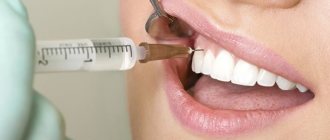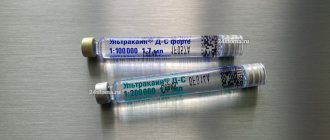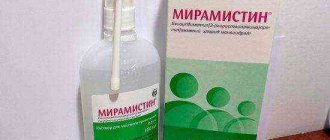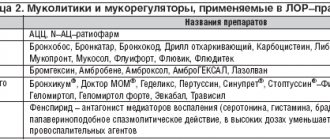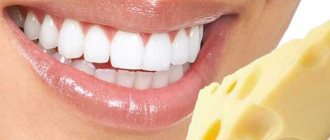From this article you will learn:
- How effective is novocaine?
- which is better - novocaine or lidocaine,
- Is it possible to dilute ceftriaxone with novocaine (or cefazolin).
The article was written by a dental surgeon with more than 19 years of experience.
Novocaine (procaine) is a local anesthetic with moderate analgesic activity that was widely used in the past for anesthesia in dentistry and general surgery. Currently, novocaine is available in the form of a 0.5 or 2% solution, in ampoules of 5 ml. In terms of the effectiveness of pain relief, it is much weaker than other anesthetics (for example, it is weaker than lidocaine - 2.5 times, and an anesthetic such as ultracaine - at least 4-5 times).
This anesthetic was previously widely used in the USSR for local anesthesia. In dentistry, it was used to remove teeth and open purulent abscesses, and in general surgery - to perform any operations under local anesthesia. Novocaine is currently not used in dentistry (it has been replaced by anesthetics based on articaine). In general surgery, novocaine is currently replaced by lidocaine - due to the greater safety and effectiveness of the latter.
Anesthetic Novocaine (in modern plastic ampoules) –
Novocain: reviews of anesthesia
Novocain's instructions for use, as well as my personal experience of using this anesthetic in dentistry and maxillofacial surgery, indicate the following clinical characteristics of the drug. For infiltration anesthesia on the upper jaw, the duration of “effective” anesthesia with novocaine is only about 10 minutes. With conduction anesthesia on the lower jaw, the duration of “effective” anesthesia is most often about 30 minutes.
The above figures will be correct if we work with a 2% novocaine solution without adding a vasoconstrictor solution, for example, epinephrine hydrochloride. To reduce the leaching of novocaine from the injection site (through the bloodstream), an additional 0.1% solution of epinephrine hydrochloride is added to the novocaine solution. This will slightly increase the duration of pain relief and the depth of anesthesia. Typically, 1 drop of a vasoconstrictor is added for every 2, 5 or 10 ml of novocaine - depending on the expected duration of the intervention and the somatic status of the patient.
The only advantage of anesthesia with novocaine over other anesthetics is its low toxicity. Anesthetics such as lidocaine and mepivacaine are 2 times more toxic than novocaine, and articaine is 1.5 times more toxic.
Disadvantages of novocaine –
- weak analgesic effect,
- short duration of anesthesia,
- slow onset of anesthesia,
- novocaine is a strong allergen (it ranks 4th among all drugs - the most often causing anaphylactic shock),
- has the property of lowering blood pressure (this is also why it is also advisable to use it only together with vasoconstrictors),
- Novocaine should absolutely not be used during pregnancy or breastfeeding,
- lack of analgesic effect in inflamed tissues (at the site of inflammation there is always an acidic pH, at which the effectiveness of novocaine sharply decreases, and this does not allow achieving good pain relief for purulent inflammation).
Novocain: price and release forms
Novocaine ampoules can contain either a 0.5% solution or a 2% solution. The cost of 1 package of novocaine (10 ampoules of 5 ml each) will be about 50 rubles. The modern form of release of Novocain is in special plastic ampoules, which replaced glass ones. Such ampoules are much safer when opened, and in addition, it is much more convenient to draw anesthetic from them into a syringe (this can be done without a needle).
Needle-free set of novocaine into a syringe (diagram):
Adverse reactions to anesthesia with Novocaine:
Novocaine can cause headache, dizziness, drowsiness, as well as weakness and trismus. From the cardiovascular system, possible decreases (more often) or increases (less often) in blood pressure, peripheral vasodilation, bradycardia, as well as collapse, arrhythmias and chest pain. On the part of the hematopoietic organs, methemoglobinemia is possible.
Allergic reactions: skin rash and itching, as well as urticaria (on the skin and mucous membranes), may occur. Anaphylactic reactions, including anaphylactic shock, may occur. The high frequency of side effects of novocaine is associated, among other things, with its low connection with blood plasma proteins when the anesthetic solution enters the bloodstream. For example, the binding of novocaine to blood plasma proteins is only about 5-7% - compared to lidocaine, this figure is 65%, and articaine is 95%.
Important: please note that novocaine is contraindicated for use in children under 12 years of age, as well as in pregnant women. The use of novocaine in women during lactation always requires temporary cessation of breastfeeding. The use of the drug at the age of 12 to 18 years, as well as in elderly patients over 65 years of age, is possible, but with great caution.
Novocaine solution d/in 0.5% 5 ml x10
Trade name: Novocaine
International name: Procaine&, (Procaine)
Pharmacological group: antiarrhythmic agent, local anesthetic
Pharmacological action: local anesthetic
Pharmacodynamics:
A local anesthetic with moderate anesthetic activity and a wide range of therapeutic effects. Being a weak base, it blocks Na+ channels, preventing the generation of impulses in the endings of sensory nerves and the conduction of impulses along nerve fibers. Changes the action potential in the membranes of nerve cells without a pronounced effect on the resting potential. Suppresses the conduction of not only pain, but also impulses of other modalities.
When absorbed and directly vascularly introduced into the bloodstream, it reduces the excitability of peripheral cholinergic systems, reduces the formation and release of acetylcholine from preganglionic endings (has some ganglion-blocking effect), eliminates spasm of smooth muscles, reduces the excitability of the myocardium and motor zones of the cerebral cortex.
When administered intravenously, it has an analgesic, antishock, hypotensive and antiarrhythmic effect (increases the effective refractory period, reduces excitability, automaticity and conductivity); in large doses it can disrupt neuromuscular conduction.
Eliminates descending inhibitory influences of the reticular formation of the brain stem. Inhibits polysynaptic reflexes. In large doses, it can cause convulsions. It has a short anesthetic activity (the duration of infiltration anesthesia is 0.5-1 hour).
When administered intramuscularly, it is effective in elderly patients in the early stages of diseases associated with functional disorders of the central nervous system (arterial hypertension, spasms of coronary and cerebral vessels, etc.).
Pharmacokinetics:
Subject to complete systemic absorption. The extent of absorption depends on the site and route of administration (especially vascularity and blood flow velocity in the area of administration) and the final dose (amount and concentration). It is quickly hydrolyzed by plasma and liver esterases to form 2 main pharmacologically active metabolites: diethylaminoethanol (has a moderate vasodilator effect) and PABA (is a competitive antagonist of sulfonamide chemotherapeutic drugs and can weaken their antimicrobial effect).
T1/2 - 30-50 s, in the neonatal period - 54-114 s. It is excreted primarily by the kidneys in the form of metabolites; no more than 2% is excreted unchanged.
Indications for use:
Infiltration (including intraosseous), conduction, epidural, spinal anesthesia, vagosympathetic cervical and perinephric blockade, retrobulbar (regional) anesthesia, terminal (superficial) anesthesia (in otorhinolaryngology)
Rectal: hemorrhoids, anal fissures.
Contraindications:
Hypersensitivity (including to PABA and other local anesthetic ethers).
For anesthesia using the creeping infiltration method: pronounced fibrous changes in tissues; for subarachnoid anesthesia - AV block, bleeding, arterial hypotension, shock, infection of the lumbar puncture site, septicemia.
Carefully:
Emergency operations accompanied by acute blood loss, conditions accompanied by decreased hepatic blood flow (for example, with CHF, liver diseases), progression of cardiovascular failure (usually due to the development of heart block and shock), inflammatory diseases or infection of the injection site, pseudocholinesterase deficiency, renal failure, children's age (up to 18 years), in elderly patients (over 65 years), seriously ill, debilitated patients,
pregnancy, childbirth.
For subarachnoid anesthesia: back pain, brain infections, benign and malignant brain tumors, coagulopathy, migraine, subarachnoid hemorrhage, arterial hypotension, skin paresthesia, psychosis, hysteria, non-contact patients, impossibility of puncture due to spinal deformity.
Dosage regimen:
For infiltration anesthesia 350-600 mg 0.25-0.5% solutions, for anesthesia according to the Vishnevsky method (tight creeping infiltration) - 0.125-0.25% solutions, for conduction anesthesia - 1-2% solutions (up to 25 ml), for epidural - 2% solution (20-25 ml), for spinal - 5% solution (2-3 ml), for terminal anesthesia (in otorhinolaryngology) - 10-20% solution.
To reduce absorption and prolong the effect of local anesthesia, an additional 0.1% solution of epinephrine hydrochloride is administered - 1 drop per 2-5-10 ml of procaine solution.
For perinephric blockade (according to A.V. Vishnevsky), 50-80 ml of a 0.5% solution or 100-150 ml of a 0.25% solution are injected into the perirenal tissue, and for vagosympathetic blockade - 30-100 ml of a 0.25% solution.
A 10% solution is also used for electrophoretic administration.
Higher doses for infiltration anesthesia for adults: the first single dose at the beginning of the operation is not higher than 1 g of 0.25% solution (500 ml) and 0.75 g of 0.5% solution (150 ml).
The maximum dose for use in children is up to 15 mg/kg.
Rectally.
Having previously freed the suppository from the contour packaging using scissors (cutting the packaging along the contour of the suppository), insert it deep into the anus (after a cleansing enema or spontaneous release of the intestines) 1-2 times a day.
Side effects:
From the central and peripheral nervous system: headache, dizziness, drowsiness, weakness, motor restlessness, loss of consciousness, convulsions, trismus, tremor, visual and auditory disturbances, nystagmus, cauda equina syndrome (leg paralysis, paresthesia), respiratory muscle paralysis, motor and sensory block, respiratory paralysis more often develops with subarachnoid anesthesia.
From the cardiovascular system: increase or decrease in blood pressure, peripheral vasodilation, collapse, bradycardia, arrhythmias, chest pain.
From the urinary system: involuntary urination.
From the digestive system: nausea, vomiting, involuntary bowel movements.
Blood disorders: methemoglobinemia.
Allergic reactions: skin itching, skin rash, other anaphylactic reactions (including anaphylactic shock), urticaria (on the skin and mucous membranes).
Other: return of pain, persistent anesthesia, hypothermia, impotence, during anesthesia in dentistry: numbness and paresthesia of the lips and tongue, prolongation of anesthesia.
Overdose:
Symptoms: pallor of the skin and mucous membranes, dizziness, nausea, vomiting, cold sweat, increased breathing, tachycardia, decreased blood pressure, even collapse, apnea, methemoglobinemia. The effect on the central nervous system is manifested by a feeling of fear, hallucinations, convulsions, and motor agitation.
Treatment: maintaining adequate pulmonary ventilation with oxygen inhalation, intravenous administration of short-acting drugs for general anesthesia, in severe cases - detoxification and symptomatic therapy.
Interaction:
Local anesthetics enhance the inhibitory effect on the central nervous system of other drugs.
Anticoagulants (ardeparin sodium, dalteparin sodium, danaparoid sodium, enoxaparin sodium, heparin, warfarin) increase the risk of bleeding.
When treating the injection site of a local anesthetic with disinfectant solutions containing heavy metals, the risk of developing a local reaction in the form of pain and swelling increases.
When using local anesthetic drugs for spinal and epidural anesthesia with guanadrel, guanethidine, mecamylamine, trimethaphan, the risk of developing a sharp decrease in blood pressure and bradycardia increases.
Use with MAO inhibitors (furazolidone, procarbazine, selegiline) increases the risk of developing a pronounced decrease in blood pressure.
Strengthen and lengthen the effect of muscle relaxant drugs.
When procaine is prescribed together with narcotic analgesics, an additive effect is noted, which is used during spinal and epidural anesthesia, while respiratory depression increases.
Vasoconstrictors (epinephrine, methoxamine, phenylephrine) prolong the local anesthetic effect.
Procaine reduces the antimyasthenic effect of drugs, especially when used in high doses, which requires additional correction in the treatment of myasthenia gravis.
Cholinesterase inhibitors (antimyasthenic drugs, cyclophosphamide, demecaria bromide, ecothiopathy iodide, thiotepa) reduce the metabolism of local anesthetic drugs.
Procaine metabolite (PABA) is an antagonist of drug sulfonamides.
Special instructions:
Patients require monitoring of the functions of the cardiovascular system, respiratory system and central nervous system.
It is necessary to discontinue MAO inhibitors 10 days before the administration of a local anesthetic.
During the treatment period, care must be taken when driving vehicles and engaging in other potentially hazardous activities that require increased concentration and speed of psychomotor reactions.
Modern analogues of novocaine in dentistry -
Lidocaine replaced novocaine around the 90s. Lidocaine is 2.5 times stronger than novocaine in terms of depth of anesthesia and duration of effect, and it does not lose effectiveness when administered in the area of inflammation (for example, with purulent abscesses). Lidocaine also has a much lower incidence of side effects. But as we said above, in dentistry lidocaine is now used only in provincial medical institutions, because In terms of depth and duration of anesthesia, lidocaine is 2-3 times inferior to articaine preparations (for example, ultracaine).
Lidocaine 2% solution in ampoules of 2 ml –
And although lidocaine is now practically not used in dentistry, in general surgery it is still one of the most widely used local anesthetics (24stoma.ru). The most popular anesthetics in dentistry today are drugs based on articaine (for example, ultracaine, ubistezin, septanest and others). For dentists, these drugs are no longer produced in glass or plastic ampoules, but in special glass carpules.
Carpule syringe and anesthetic carpules –
Each capsule contains 1.7 ml of anesthetic and is ready for use (i.e. it does not need to be opened). It is completely inserted into a special carpule syringe, into which a special double-sided needle is then screwed in from the side of the syringe nose. When you press the syringe plunger, the latter presses on the movable rubber tab located in the lower part of the carpule, which causes an increase in pressure inside the carpule and leads to the release of the anesthetic solution through the needle into the tissue.
How is anesthesia performed in dentistry?
For more information about modern anesthesia in dentistry, read the article: → Pain relief in dentistry
Use of novocaine for electrophoresis, compresses and antibiotic dilution
Electrophoresis with novocaine is not very effective. It is best to use the anesthetic Lidocaine 2% for electrophoresis (sold in ampoules of 2 ml).
Compress with dimexide and novocaine -
Compresses with dimexide are very often prescribed by maxillofacial surgeons, especially for traumatic injuries to the face (for example, fractures of the facial bones). A prerequisite is that there should be no violation of the integrity of the skin in the area where the compress is applied. Compresses with dimexide can reduce swelling and inflammation of soft tissues much faster; for example, in case of a broken jaw, just a few procedures are enough.
Dimexide concentrate (in 100 ml bottles) –
Dimexide with novocaine compress: the proportions of the compress with dimexide and novocaine are used only externally. When applying a compress on the face, you need to use a 20-25% concentration of dimexide. To do this, dilute dimexide in the following proportion: 1 part dimexide - three parts warm boiled water. When used on less sensitive areas of the body, you can use more concentrated solutions (30, 35, 40%).
Moisten gauze pads with a solution diluted with water. Apply the contents of 1 ampoule of novocaine (5 ml of solution) directly onto moistened wipes. Apply the wipes to the desired area. Place a plastic film over the napkin, completely covering the area of the applied gauze napkin with the solution. Place a layer of fabric on top of the polyethylene (the thicker the fabric, the stronger the thermal effect will be - keep this in mind!) and bandage it.
The time of one compress is 20-30 minutes. The course of treatment is 10-12 procedures (1 procedure per day). From experience, we can say that to enhance the analgesic effect, it is better to use lidocaine rather than novocaine (2-4 ml of lidocaine per 1 compress). Lidocaine penetrates the skin better, is less allergic, and its analgesic effect is 2 times stronger.
Dimexide: how to apply a compress (example)
→ DIMEXIDE instructions for use (official, PDF)
How to dilute ceftriaxone with novocaine -
It is not advisable to dilute the antibiotic Ceftriaxone with novocaine, because the antibiotic itself is quite allergenic, and novocaine increases the risk of developing anaphylactic shock many times (compared to lidocaine). It is optimal to dilute ceftriaxone with a lidocaine solution (this is also recommended by WHO). This anesthetic is much less allergic and has a stronger analgesic effect.
500 mg of ceftriaxone must be diluted in 2-2.5 ml of solvent. To dilute 1000 mg of ceftriaxone - 3.5-4 ml of solvent. The latter can be used either water for injection or a 0.5-1% solution of novocaine, but best of all is a 1% solution of lidocaine. But in order to dissolve ceftriaxone in lidocaine, you will still have to use water for injection, because. the concentration of lidocaine in ampoules is 2%.
For example, to obtain a 1% lidocaine solution for diluting 500 mg of ceftriaxone, you will need to first draw 1.0 ml of lidocaine into a syringe, and then another 1.0 ml of water for injection into the same syringe. Then add the resulting solution to the vial with ceftriaxone and shake.
Cefazolin: how to dilute with novocaine
Let us say right away that it is undesirable to dilute cefazolin with novocaine, as well as ceftriaxone (for the same reasons). It is also best to use a 1% lidocaine solution. To dissolve 1000 mg of cefazolin, 4 ml of a 1% lidocaine solution is needed. To obtain a 1% solution of lidocaine, you need to mix 2 ml of lidocaine and 2 ml of water for injection in a syringe, drawing both solutions in turn into one syringe. The resulting solution is injected into a cefazolin ampoule. We hope that our article on the topic “Novocain - instructions for use” was useful to you!
Sources:
1. Dental education of the author of the article, 2. Personal experience as a dental surgeon, maxillofacial surgeon, 3. National Library of Medicine (USA), 4. “Local anesthesia in dentistry” (Baart J.), 5. “Propaedeutics of surgical dentistry" (Soloviev M.).
Novocaine, solution for injection 2.5 mg/ml and 5.0 mg/ml
Overdose symptoms
In low doses, novocaine acts as a stimulant of the central nervous system; in high doses it leads to depression of central nervous system functions. Intoxication with novocaine hydrochloride occurs in 2 phases:
1. Stimulation
— CNS: paresthesia of the eyelids, feeling of numbness of the tongue, anxiety, delirium, convulsions (tonic-clonic).
- Cardiovascular system: increased cardiac output, increased blood pressure, redness of the skin.
2. Depression
— CNS: coma, respiratory arrest.
— Cardiovascular system: absence of pulse, pale skin, cardiac arrest.
Patients in the first stage of intoxication with local anesthetics exhibit symptoms of agitation. They are restless and complain of dizziness, visual and hearing disturbances, tingling and paresthesia, especially in the area of the tongue and lips. Paresthesia of the tongue, chills, and muscle cramps are warning signs of impending generalized seizures. Plasma concentrations of novocaine that do not reach the threshold for initiating seizures also often lead to drowsiness and sedation of the patient. At the first stage of intoxication, tonic-clonic convulsions develop. With progressive intoxication of the central nervous system, brain stem dysfunction develops with respiratory depression and symptoms of coma, which can lead to death.
A drop in blood pressure is often the first sign of cardiovascular toxicity. Hypotension is mainly due to depression or blockade of cardiac conduction. However, cardiovascular toxicity is of relatively little clinical significance.
In the case of accidental general spinal anesthesia, intoxication is manifested by initial signs of anxiety, then drowsiness, which can progress to unconsciousness and respiratory arrest.
Treatment of overdose:
If symptoms of toxic effects of novocaine on the central nervous system or cardiovascular system appear, you must:
- immediate cessation of administration of novocaine;
— ensuring airway patency;
- if necessary, oxygen inhalation or artificial respiration;
— careful monitoring of blood pressure, pulse rate and pupil diameter;
- in case of an acute and threatening drop in blood pressure, the patient is transferred to the so-called. “anti-shock” position (lying horizontally, with the head positioned below the level of the legs), beta-adrenergic agents (adrenaline) are administered intravenously slowly. In addition, crystalloid solutions are administered to replenish volume;
- when the tone of the vagus nerve increases with the development of bradycardia, atropine is administered (0.5 mg to 1.0 mg intravenously);
- in case of suspected cardiac arrest, it is necessary to carry out appropriate resuscitation measures;
- if seizures develop, diazepam is administered (about 0.1 mg/kg intravenously).
Analeptics of central action are contraindicated in case of intoxication with local anesthetics!
